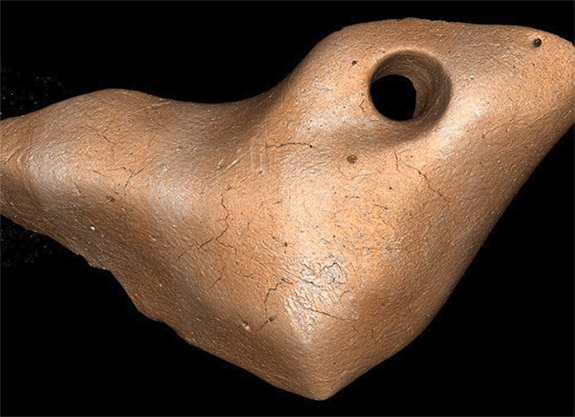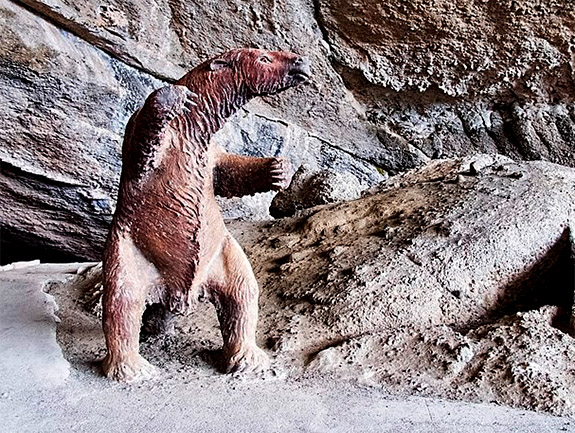July 18th, 2023
Pendants made from the bones of a now-extinct giant sloth are helping to rewrite the history of the "peopling" of the Americas. The long-held belief that humans reached the Americas via a land bridge between Russia and Alaska about 15,000 years ago has been turned on its head.

Scientists studying the jewelry artifacts and stone tools found in the Santa Elina rock shelter in central Brazil are convinced that the tiny holes in the ornaments were drilled by early humans between 25,0000 and 27,000 years ago.
Live Science reported that the research team from Federal University of São Carlos, Brazil, used a combination of microscopic and macroscopic visualization techniques to confirm that the holes had been polished and bore the marks of stone tool incisions.

Although they are now extinct, fossilized remains of giant sloths reveal that the odd-looking creatures were 10 to 13 feet long and weighed more than 1,000 pounds. Their bodies were covered by bony dermal plates, much like an armadillo.
Those plates are called "osteoderms," and these were the bones used by cave dwellers more than 25,000 years ago to adorn themselves. The researchers believe the humans coexisted with the giant sloths in South America.
In 2021, researchers found fossilized human footprints in New Mexico that are believed to be between 21,000 and 23,000 years old. The Brazilian study, which was published last week in the journal Proceedings of the Royal Society, expands the timeline of humans in the Americas even further.
“We believe that there should be more evidence waiting to be found in the rock shelters and caves of Brazil in places little or not explored,” lead author Thaís Pansani, a paleontologist at the Federal University of São Carlos, told Live Science.
Credits: Bone pendant image courtesy of Thais Pansani. Giant sloth image by Dan Lundberg, CC BY-SA 2.0, via Wikimedia Commons.

Scientists studying the jewelry artifacts and stone tools found in the Santa Elina rock shelter in central Brazil are convinced that the tiny holes in the ornaments were drilled by early humans between 25,0000 and 27,000 years ago.
Live Science reported that the research team from Federal University of São Carlos, Brazil, used a combination of microscopic and macroscopic visualization techniques to confirm that the holes had been polished and bore the marks of stone tool incisions.

Although they are now extinct, fossilized remains of giant sloths reveal that the odd-looking creatures were 10 to 13 feet long and weighed more than 1,000 pounds. Their bodies were covered by bony dermal plates, much like an armadillo.
Those plates are called "osteoderms," and these were the bones used by cave dwellers more than 25,000 years ago to adorn themselves. The researchers believe the humans coexisted with the giant sloths in South America.
In 2021, researchers found fossilized human footprints in New Mexico that are believed to be between 21,000 and 23,000 years old. The Brazilian study, which was published last week in the journal Proceedings of the Royal Society, expands the timeline of humans in the Americas even further.
“We believe that there should be more evidence waiting to be found in the rock shelters and caves of Brazil in places little or not explored,” lead author Thaís Pansani, a paleontologist at the Federal University of São Carlos, told Live Science.
Credits: Bone pendant image courtesy of Thais Pansani. Giant sloth image by Dan Lundberg, CC BY-SA 2.0, via Wikimedia Commons.


